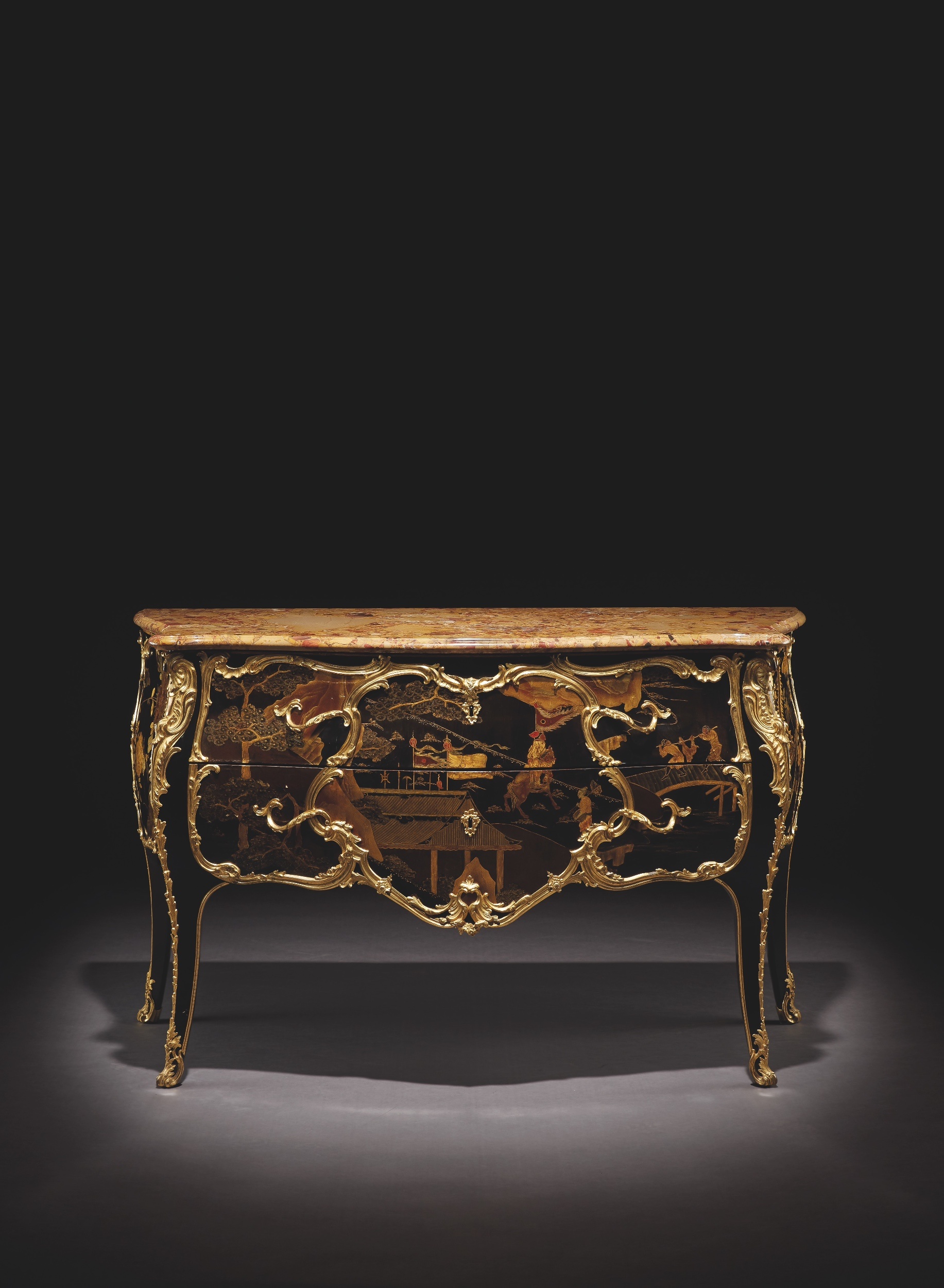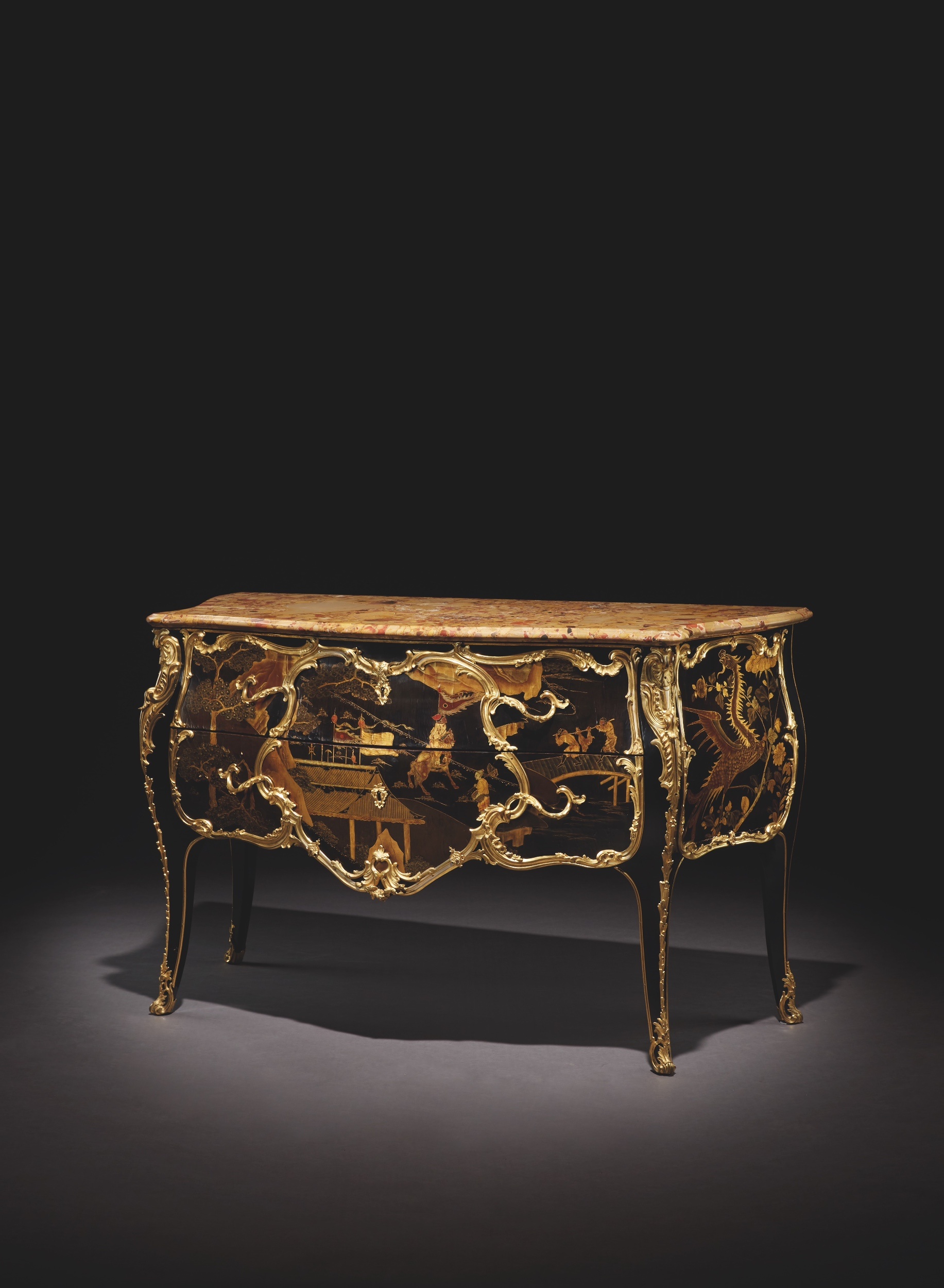



With a serpentine moulded breche d'alep marble top above two drawers, on cariole legs, decorated throughout with dragons and figures in landscapes, stamped I. DUBOIS JME to back left corner of top.
Baron Thyssen-Bornemisza, Lugano.
Elizabeth Parke Firestone, Newport, Rhode Island and Akron, Ohio; Christie’s, New York, 22-23 March 1991, lot 915.
Acquired from Partridge, London.
Private Collection America
Detroit, The Detroit Institute of Arts, French Taste in the Eighteenth Century, April-June 1956, no. 35
Jacques Dubois, maître in 1742.
Jacques Dubois (1694-1763) was related through his mother to an important family of Ebenistes. His mother whose maiden name was Marguerite Montigny (Great Aunt of Philippe-Claude Montigny ) was the widow of Nicolas Gerard, by whom she had a son Noel Gerard. Noel Gerard was one of the most important ebenistes and dealers between 1720 – 1730 and it was probable that Dubois must have worked there which would explain why he did not become a master until late in life in 1742. He was then elected a juré of the guild in 1752 and was one of the most prolific cabinet-makers in the Louis XV period. The inventory after his death reveals a large workshop with twelve workbenches, describing 127 pieces of furniture. This exquisite lacquer commode illustrates the best of Dubois' oeuvre that is characterized by graceful lines and finely cast rococo mounts.The sinuous mounts on this commode, with elaborate encadrements and S-form handles, feature with variations on some of the richest creations from Dubois’s workshop, for instance on a pair of floral marquetry commodes stamped by both Dubois and Migeon in a private collection in Paris (illustrated in A. Pradère, Les Ebénistes Français de Louis XIV à la Révolution, Paris, 1989, p. 168), and on a commode veneered in bois satiné in the Rothschild Collection, Waddesdon Manor (illustrated in
G. de Bellaigue, The James A. de Rothschild Collection at Waddesdon Manor: Furniture, Clocks and Gilt Bronzes, Fribourg, 1974, vol. I, pp. 218-220, cat. 47). A further almost identical lacquer commode, possibly even the pair to the commode offered here, is illustrated in Pradère, op. cit., p. 170, fig. 147 (with Segoura, Paris).
| Dimensions | CM | Inches |
|---|---|---|
| Width: | 145 | 57 |
| Depth: | 66 | 26 |
| Height: | 92 | 36 |